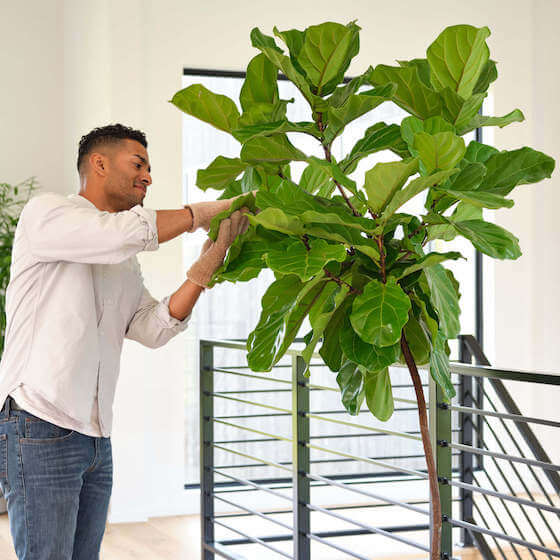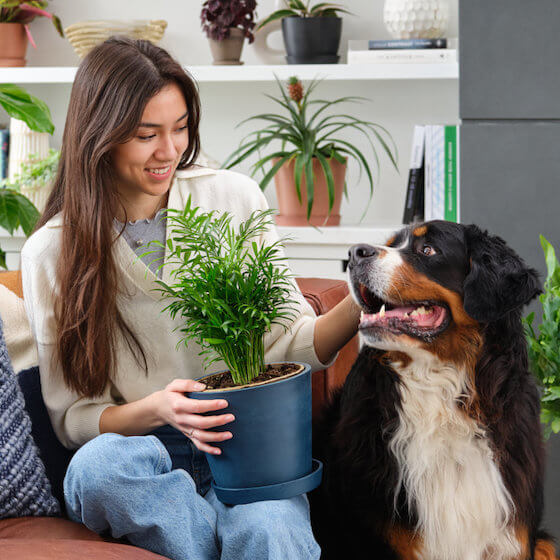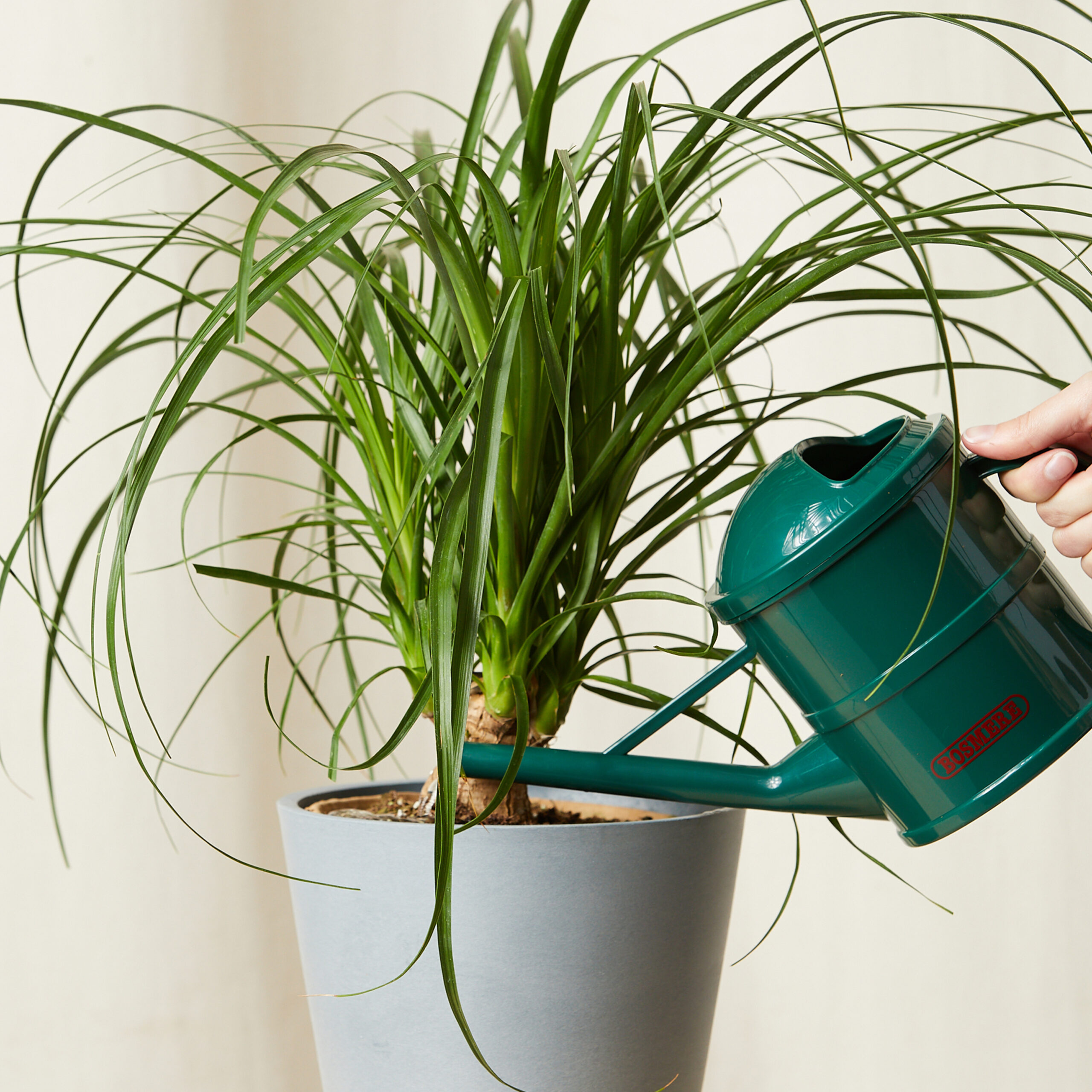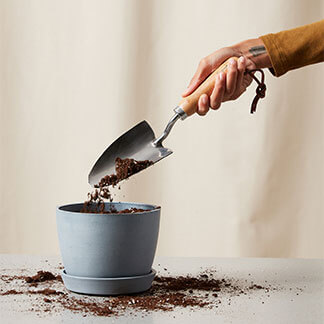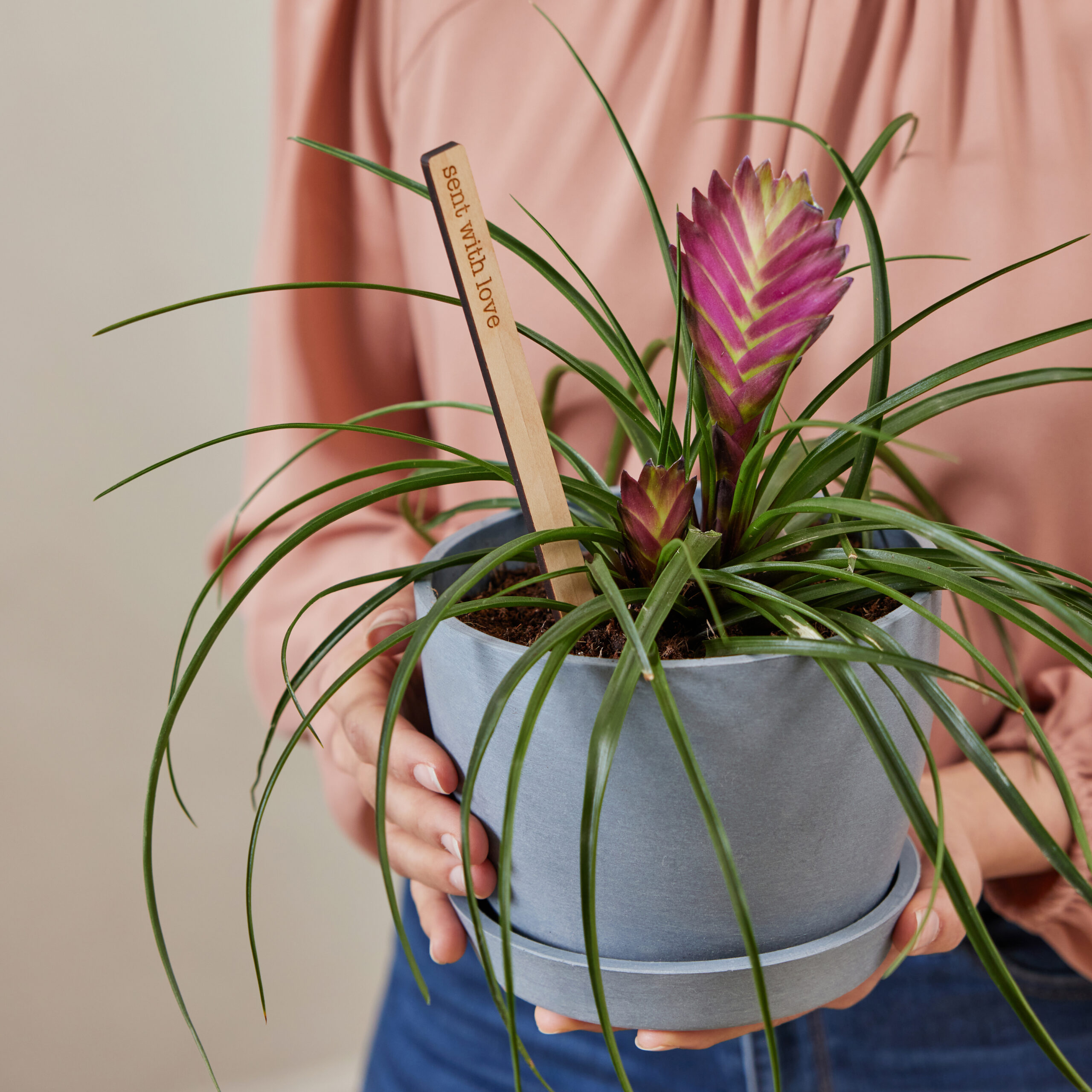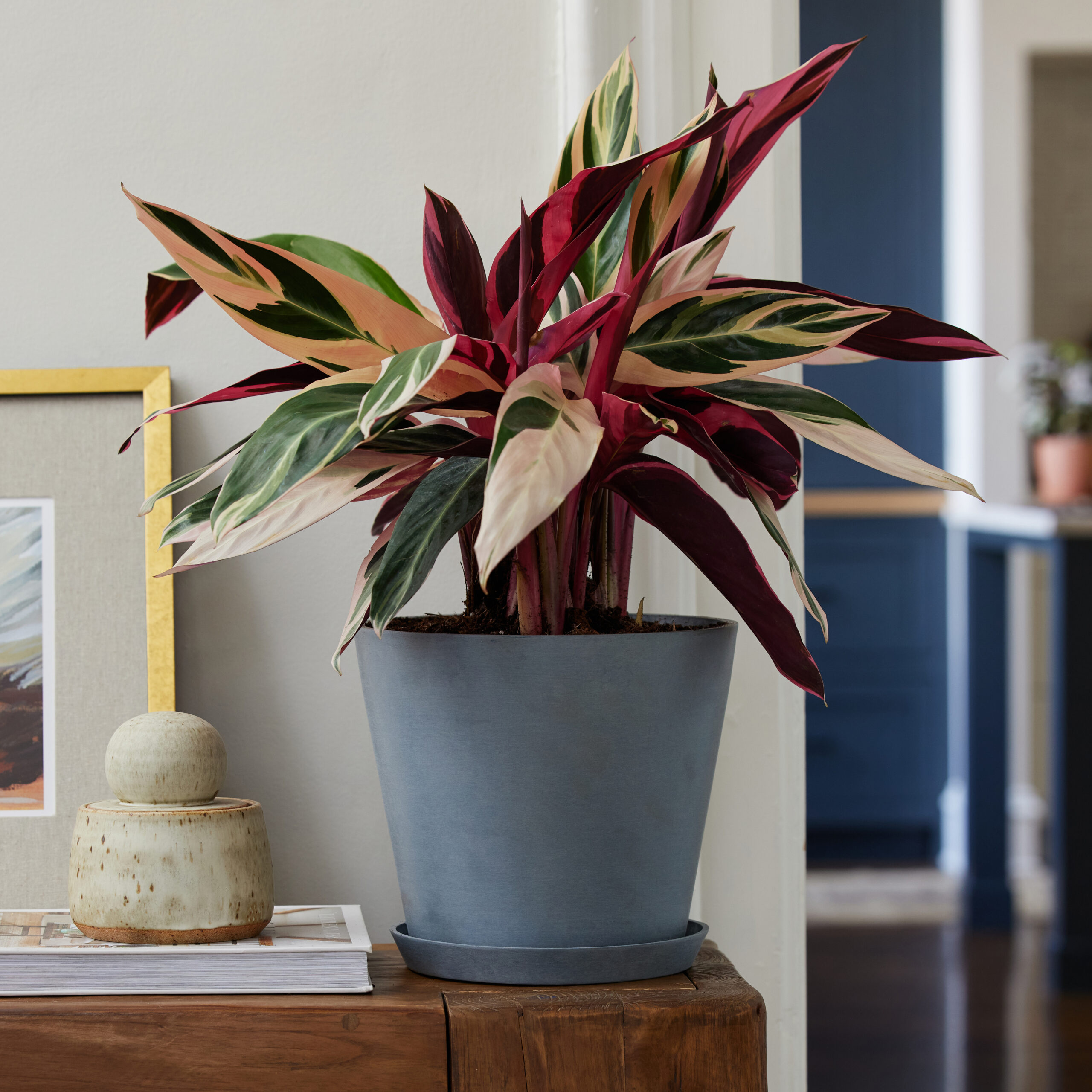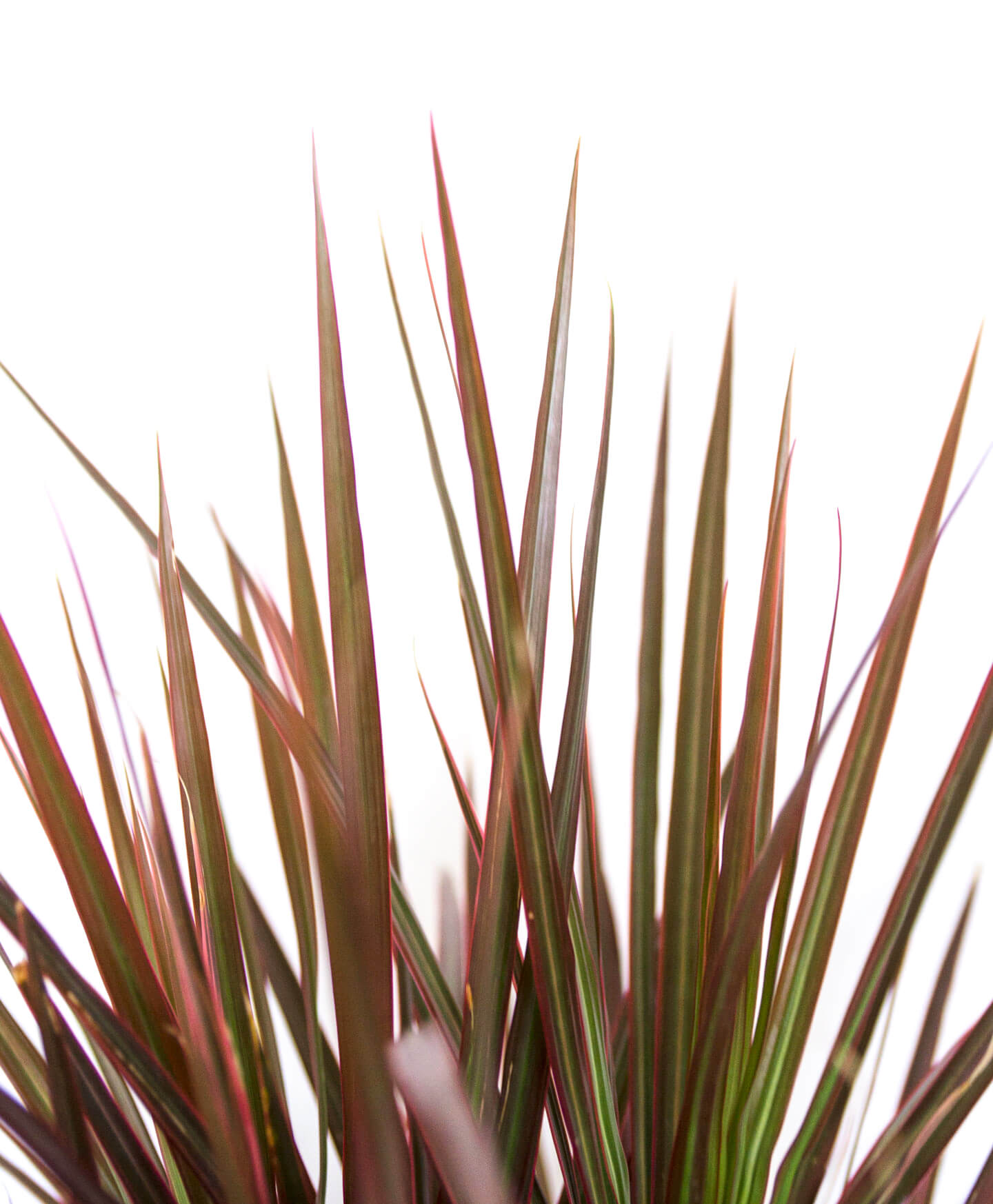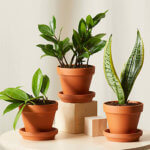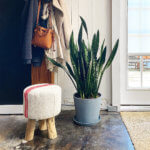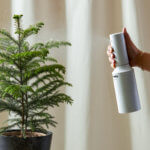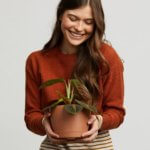Moisture
The most common cause of browning leaf tips among Dracaena plants is under-watering, or allowing your Dracaena to sit dry for extended periods of time. Water your Dracaena when the top 75% of the soil in the pot is dry. Soil should never be soggy or wet. In the winter, you can allow your plant to dry out more between waterings, but be sure to boost humidity with regular misting, a humidifier, or pebble tray.
When you water your Dracaena, make sure you provide enough water so that liquid flows from the drainage hole at the bottom of the pot and into the saucer. It’s extremely important to discard any excess water in the saucer and not to let your plant sit in any standing water. Your Dracaena does not like “wet feet,” which will cause the roots to rot and lead to the eventual death of the plant.
Water Quality
The quality of your water could also be causing your Dracaena’s leaves to brown. Dracaena plants are sensitive to the chemicals found in most tap water. Use filtered water or allow your tap water to sit out uncovered overnight before watering so chemicals such as chlorine can evaporate.
Humidity level
Low humidity and dry soil cause leaves to droop and brown on their edges, later followed by entire yellowing, browning, and leaf drop. Misting the leaves of your Dracaena often will increase the humidity. You could also use a pebble tray for a long-term increase in humidity, or use a humidifier.
Pests
A weakened or stressed Dracaena is more susceptible to insect infestations. Sap-sucking bugs like spider mites can drain your plant of moisture. This problem quickly manifests itself by yellowing leaflets and fronds. Scale, mealybugs, and spider mites occur frequently in indoor conditions. If not killed early on, these small pests proliferate and move all along frond parts into nooks and crannies. The piercing mouths of the insects exhaust your plant and accelerate yellowing, especially if your Dracaena is already unhealthy from poor lighting, a nutrient deficiency or improper soil moisture.
Some yellowing and browning is natural
Is there new growth on your Dracaena? If there is new growth on your plant and the yellowing and browning leaves are older, particularly at the bottom of the plant, this yellowing is natural. Your plant sheds its old leaves and sends energy to new growth.
